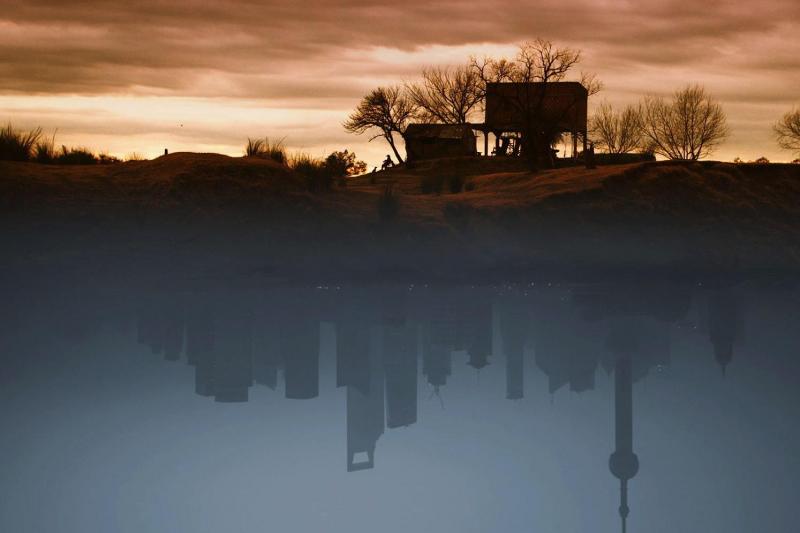SXSW Review: Vivan las Antipodas

As children, many of us growing up in Texas thought that if we could just dig straight down through the center of the Earth, we would "come out in China." It turns out we would have been somewhere in the Indian Ocean, floundering about with no land in sight. But there are some very real antipodes -- places diametrically opposed to each other -- on land. For Vivan las Antipodas, acclaimed Russian documentary filmmaker Victor Kossakovsky took a film crew to visit four pairs of antipodes (Argentina-China, Chile-Russia, Hawaii-Botswana, New Zealand-Spain) and see if there were any similarities or ironic contrasts between oppositional geography and ways of life. In the process he captured a treasure trove of stunning images that remind us how wonderful and beautiful our planet and its inhabitants can be.
Describing the genesis of this remarkable film before its screening at the Venice Film Festival, Kossakovsky explained: "Traveling in the countryside of Argentina, I saw a man, fishing from a small bridge in a very small village. Under the sunset-light, that simple place looked … like the most beautiful and peaceful place on Earth. I imagined -- what if I were to extend this fishing line straight … through the center of the Earth? What will I see on the other side? Turned out, one of the most powerful, bustling and noisy cities of the planet – Shanghai."
These two places could not be more diametrically opposed. The two brothers who guard the floating wooden bridge over a narrow place on an Argentinean river spend most of their time waiting for customers, wondering about the people in China -- they are obviously aware of why Kossakovsky is filming them -- and tending to their herd of very healthy cats. Some mornings are bathed in mysterious fog, while the air they breathe is doubtlessly pure and healthy.
Through awe-inspiring editing and SFX, the director then slowly turns the Argentinean village upside down and allows Shanghai to emerge with its millions of bustling people, hundreds of building sites, ceaseless traffic, lung-splitting smog and thousands of people getting on/off a ferry to carry them across the Yangtze River. The two Argentinean brothers would doubtlessly feel like they were on another planet rather than simply on the other side of their own.
Throughout Vivan las Antipodas, we are presented with other land-mass antipodes, which turn out to be quite rare. Patagonia, Chile, with beautiful snow-covered mountains and flocks of sheep headed to shearing, is contrasted with gorgeous Lake Baikal in Russia, which is likewise a rural area. The camera turns sideways and before taking us elsewhere shows us a near-perfect symmetry of mountains and forest in the still reflection of the placid lake surface. This is abstract art provided by nature and a creative mind.
Botswana (in southern Africa) with a small settlement of people surrounded by magnificent herds of elephants, fearless giraffes, and sleepy lions is balanced out by Big Island, Hawaii and a few people living right next to lava beds, some hardened into a moonscape, other bits still cracking up, glowing, and flowing. Both places remind us of the potential danger of nature, no matter how beautiful and awe-inspiring.
Miraflores, Spain, a beautiful resort town on the Costa del Sol, is the antipode of Castle Point, New Zealand, where a great deal of time is spent trying to remove a whale carcass from the beach, whose stench would be deadly to tourism.
In the style of Godfrey Reggio's Koyaanisqatsi (1982), Kossakovsky's breath-taking Vivan las Antipodas visits various spots on the globe. But unlike Reggio, he is not pointing out the devastation wrought by human activity but simply reminding us we are all "tied together" and still have places of remarkable beauty and quiet on the planet. This is a documentary which lifts the spirit and makes us want to get out our passports.
Vivan las Antipodas plays SXSW once more: today at 1:30 pm at Violet Crown.
Chale Nafus is the Director of Programming and a Founder's Circle member at the Austin Film Society.

